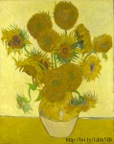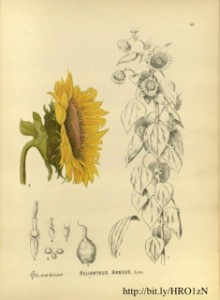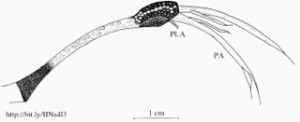Can you draw? Can you draw well? Chances are if you’re a biologist the answer to at least one of these questions is ‘no’. You may have studied art at school, in the same way you took French or Literature, but you figured that as a budding biologist the days of declining verbs, finding meaning in poems or sketching a vase of flowers were far behind you. Then, one day you go to an undergraduate lab session and someone says ‘look at this specimen and draw what you see”.
Draw? But I can’t draw!
I know that this is a common reaction because it was one I had myself as an undergraduate and one I’ve been seeing recently while demonstrating in labs. I found myself trying to explain that you don’t need to be able to draw to do scientific drawing but couldn’t seem to explain satisfactorily what you did need. So I thought I’d take this opportunity to say what I think is important for scientific drawings and then in comments below others more knowledgeable than myself can add their advice.
I guess the first thing to understand is the point of a scientific drawing. Scientific drawings differ from art in that they are not trying to find a ‘soul’ or convey via metaphor some deeper truth. Instead they are trying show accurately and with as much detail as possible what an organism looks like at a given magnification.
In other words, not this:
but this:
The reasons for doing this are two-fold. One is for your own benefit. You may find yourself studying a multitude of specimens in detail for a period of time but if you have to stop the work for some reason then without accurate notes you will have no idea what you’ve been doing (this goes for lab notes in general, not just drawings). The other reason is to show other researchers what you are describing in text. A picture is worth a thousand words, so the saying goes, and given the technicality of the language of many fields of science, it also makes understanding easier. You may think that photography has superseded the need for line drawings but surprisingly not. Photos that capture all the details required can often be extremely hard to take: getting the exposure, angle and perspective correct can be very difficult, especially for small or otherwise fiddly objects.
I realise that the scientific drawing above is beyond the skills of most of us, but there are ways to achieve a certain level of technical ability without possessing any artistic merit. If I may indulge in a personal anecdote, I cannot draw. I gave up art at school as soon as I was allowed and in that time I never progressed beyond drawing three-dimensional boxes (though I was really good at them!). Yet I have done a scientific drawing that was suitable for publication1:
The point is not to gloat (honestly, who would gloat over that!) but to say that if I can do it, anyone can!
So, how do you do it? There are a few pieces of equipment that are essential in my view. These are:
- Sharp pencil (a ‘clicky’ pencil with a hard (HB) lead is ideal)
- Plain paper
- Ruler
- Eraser
The ruler may seem strange at first but if you are making any attempt at accuracy proportions are key. I’d even go so far as to say if you have one to hand, use a protractor to help with angles as well. The main problem I’ve seen is students getting the proportions wrong because they are drawing solely by eye. Measure the size of parts and translate that to the page. If you can do a one-to-one scale then great but if that’s not possible then factor up or down as necessary. Make notes if you have to. To draw the illustration above I had a page covered in all the various measurements, from the length of the appendages (it’s the lure of an anglerfish, if you’re wondering) right down to the size of the larger spots. The purpose wasn’t to make a beautiful illustration (which is good as it isn’t) but to show other researchers as clearly as possible the key feature used in identifying the fish.
It’s really helpful if you can poke around the specimen you are trying to draw, if possible. Something may look completely incomprehensible but if you lift it or tilt it, it can often suddenly make sense. It’s really hard to draw what you don’t understand. Label parts if you can, especially if you’re making a first draft. The more information the better. You never know what detail may become important and if you haven’t noted it then you may regret it (I had to go half-way round the world to re-examine that fish because I didn’t make good enough notes and drawings the first time).
It will take several attempts to do a really good illustration and obviously in labs you don’t have that sort of time but you can still use them to start developing your skills. You can also practice. It’s really easy: just find a biological object (shells are really good) and try and draw it as accurately as possible. You will get through lots of paper, rub out lots of lines and probably swear and get frustrated, but you can draw scientifically. And, which is ultimately the real reason for doing scientific drawings, the close study required to achieve this will help you understand the specimen in deeper and more complete way.
Good luck and enjoy!
1. Hearne S. (2009) First record of the anglerfish, Himantolophus appelii, from the Falkland region. JMBA2 – Biodiversity Records. 2: e152
Author:
Sarah Hearne, hearnes[at]tcd.ie, @SarahVHearne
Image Sources: Wikicommons and Sarah Hearne




